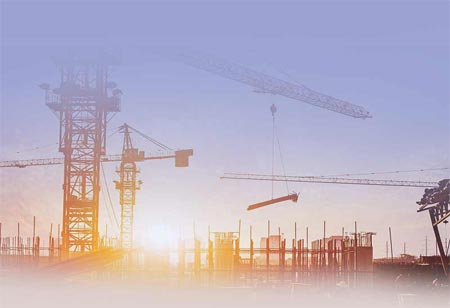Thank you for Subscribing to Construction Business Review Weekly Brief

Safe Demolition Work Precautions
A large amount of waste can leave an average demolition site, so plans must be put in place for it to be disposed of properly.
Every now and then, property owners demolish old structures and replace them with something much better. Generally, such developments are straightforward, but they aren't without risks.
The number of hazards present on a typical building site can make demolition work very complex. As a result, it is important to review the following demolition safety precautions.
Prepare for Asbestos
A majority of the buildings being demolished to make way for new ones were built before 2000. Any structure being demolished contains asbestos since asbestos was a common building material before 2000.
Think about whether to hire asbestos removalists in NZ before bringing in demolition equipment to undertake asbestos testing and removal. The purpose of this step is to prevent friable asbestos from being released into the air on a building site, putting everyone in the general vicinity at risk.
Wear Personal Protective Equipment (PPE)
Many people assume that personal protective equipment is only for the health sector or asbestos removal. Additionally, it's a term that can be applied to any safety equipment for hazardous or dangerous industries.
As part of any demolition project, personal protective equipment should be worn in addition to other safety measures. If you work near machinery or anywhere there is an overhead risk, you should always wear a hard hat. If you work in an environment where there are chemicals, power tools, or harsh conditions, you will also need to be able to protect your eyes and face.
In addition to hearing and respiratory protection, hi-viz vests will also help keep you and your team safe from a variety of hazards found on the average construction site. Often, workplaces even require protective clothing such as waterproof leggings, gloves to protect hands, and safety footwear to protect feet.
Prioritize Training, Qualifications, and Experience
A demolition site can be a dangerous place, with a multitude of different hazards present that could cause injury. However, site managers and business owners still have to deal with risks, even if they try to mitigate them.
To ensure everyone's safety during demolition works, you should hire competent employees who have the necessary training, experience, and qualifications. Make sure they have completed the right training courses, have the right qualifications, and know how to stay safe.
Keep a Clean Site
Maintaining a clean and tidy worksite may translate into a safer worksite, which means that having measures in place to keep all areas organized, is beneficial. It may be necessary to arrange daily debris removal and to have dedicated skip bins for different materials.
In addition to providing employees with access to bathroom facilities, running water, changing areas, and shelter from the elements, a safe working environment must also ensure their health and well-being.
Monitor Dust, Vibrations, and Noise
Protecting the environment is as important as ensuring the safety of workers. Establish plans to keep environmental hazards to a minimum, as well as neighboring properties, safe. Generally, monitors are used to observing dust, vibrations, and noise.
With the help of specialized curtains or barriers, you can limit the dust from ending up on neighboring properties. Additionally, keeping specific noisy activities between daylight hours may help limit the effects of vibrations and noise.
Manage Waste Disposal
A large amount of waste can leave an average demolition site, so plans must be put in place for it to be disposed of properly.
Perform Risk Assessments
Businesses must conduct a risk assessment prior to starting a demolition project to identify potential risks and how to mitigate them.
Demolition risk assessments generally consider risks such as:
• Materials that are hazardous
• Risks associated with demolition activities
• Disposal of waste materials
• The plant and equipment
• Cleaning and decontamination of equipment
• Cleaning up the site
• Getting rid of asbestos








